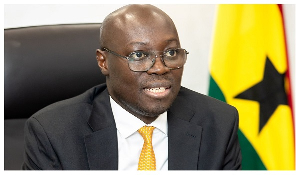Small and medium-sized enterprises (SMEs) are the backbone of any economy and their success is essential for overall economic growth. However, raising capital can be a significant challenge for these businesses, and many of them turn to the financial market for investment options.
While high-risk financial market instruments can offer the potential for high returns, they also come with a high degree of risk that can impact SME profitability. This essay will explore the potential risks and rewards associated with high-risk financial market instruments and their impact on SME profitability.
Firstly, it is essential to understand what high-risk financial market instruments are. High-risk financial market instruments refer to investments with a high degree of risk associated with them. While they offer the potential for high returns, they also come with a high degree of risk.
For instance, SMEs that invest in high-risk futures contracts can lose all or a significant portion of their invested capital if the underlying asset price goes against the position. This can significantly impact SME profitability, making it difficult for them to recover from such losses.
Another factor to consider is the volatility of high-risk financial market instruments. Prices can fluctuate rapidly, making it challenging for SMEs to predict returns on their investments. For instance, an SME investing in a high-risk option contract may incur losses if the price of the underlying asset fluctuates, causing the option to expire out of the money.
High-risk financial market instruments can also be difficult to manage effectively. SMEs may need to make frequent changes to their investment strategy to minimise risk exposure, which can be costly. Additionally, SMEs may not have the necessary expertise to manage their investments effectively, which can increase their risk exposure.
The potential for fees and charges associated with high-risk financial market instruments is another factor to consider. Many of these instruments come with high fees and charges, which can reduce SMEs’ returns on investment.
Despite the risks associated with high-risk financial market instruments, there is also the potential for high returns. These instruments can offer SMEs the potential for significant profits, which can help to increase their profitability.
For example, an SME that invests in a high-risk stock option contract may be able to generate significant profits if the underlying asset price moves in the direction of the position.
Moreover, high-risk financial market instruments can provide SMEs with diversification opportunities. By investing in these instruments, SMEs can diversify their investment portfolio and reduce their risk exposure. This can help to mitigate the risks associated with any one investment and can provide a more stable return on investment.
Additionally, investing in high-risk financial market instruments can provide SMEs with access to a broad pool of capital, which can be particularly useful for businesses that require significant investment to scale up their operations.
Moreover, SMEs need to conduct thorough research before investing in high-risk financial market instruments. They must have a good understanding of the market and the specific instrument they wish to invest in. SMEs must also have a clear investment strategy and exit plan before entering into any investment. This will help to minimise the risk exposure and maximise the returns on investment.
In conclusion, high-risk financial market instruments can be a double-edged sword for SMEs. While they offer the potential for high returns, they also come with a high degree of risk. SMEs must carefully consider the potential risks and weigh them against the potential rewards before investing in any high-risk financial market instrument.
They must also seek expert advice, assess their risk tolerance level, have adequate capital reserves, and conduct thorough research before investing. By doing so, SMEs can maximise their profitability and achieve their long-term business objectives.
General News of Wednesday, 5 April 2023
Source: Edwin Ackuaku, Contributor

















